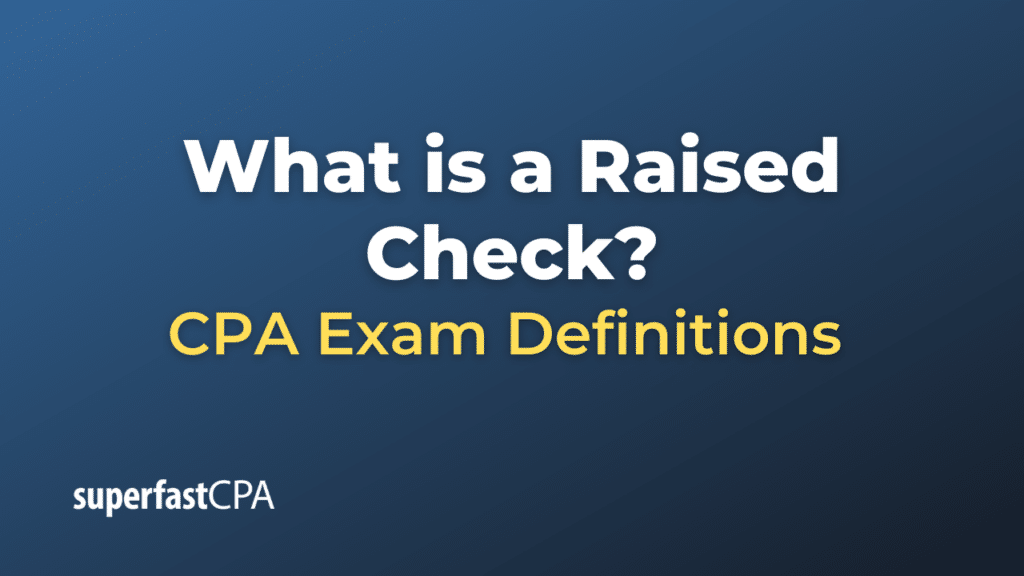Raised Check
A “raised check” refers to a check on which the monetary amount has been altered or increased after it was originally written and signed. This is a form of check fraud. The fraudster usually attempts to change the amount on the check in hopes of receiving more money than the check writer intended to pay. Such alterations can be done through various means, including chemical washes, typewriters, or by simply writing over the original amount.
For instance, a check originally written for $10.00 might be fraudulently altered to read $100.00.
It’s important for both individuals and businesses to be vigilant and ensure that their checks are not vulnerable to such alterations. Some preventive measures include:
- Using a pen with indelible ink when writing checks.
- Ensuring there are no gaps in the written or numerical amounts.
- Utilizing checks that have security features designed to prevent tampering or alterations.
If someone suspects that a check has been raised, it’s crucial to contact their bank immediately and, if necessary, report the incident to the police.
Example of a Raised Check
Let’s walk through a hypothetical scenario involving a raised check.
Example: The Case of the Altered Rent Check
Background: Anna rents an apartment from her landlord, Mr. Thompson. Every month, she writes a check for her rent, which amounts to $1,200.
The Incident: One month, after handing over her rent check, Anna notices an unexpected overdraft in her bank account. Upon investigating, she finds out that the check she wrote for her rent was cashed for $12,000 instead of the usual $1,200.
The Discovery: Anna retrieves a digital copy of the cashed check from her bank’s online portal. She observes that someone has added a zero to the amount written out, making it “Twelve Thousand” instead of “One Thousand Two Hundred.” Additionally, the box where the amount is written numerically now reads “$12,000.00” instead of “$1,200.00.”
The Confrontation: Anna immediately contacts Mr. Thompson, who is equally shocked by the revelation. He mentions that he directly deposited the check without examining the amount, assuming it would be the usual $1,200.
The Investigation: Anna and Mr. Thompson then approach the bank together. With the bank’s assistance, they discover that the check had been intercepted by a third party (presumably a worker at the property management office) before it reached Mr. Thompson. This individual altered the check and then deposited it into Mr. Thompson’s account, hoping it wouldn’t be noticed amid the many other transactions.
The Resolution: Thanks to the digital copy of the check and bank records, the perpetrator was identified and later apprehended. Anna was refunded the overdrafted amount, and she began using more secure methods for her rent payments, like direct transfers.
This example emphasizes the importance of regularly monitoring one’s bank account and being cautious about where and how checks are handed over.













